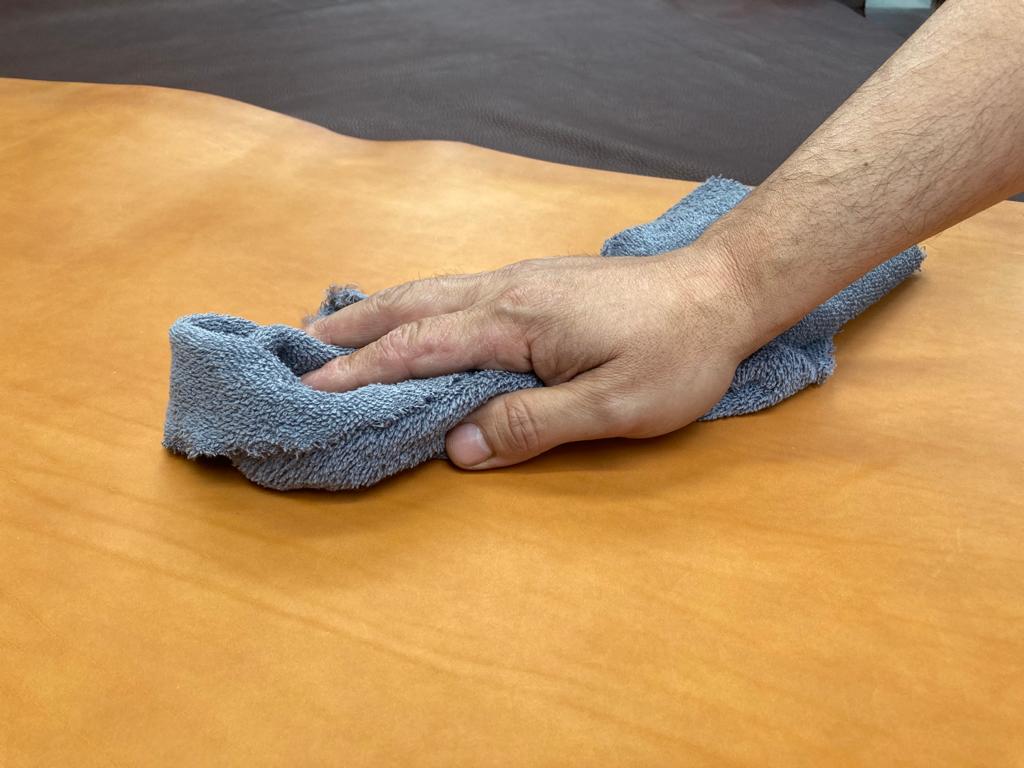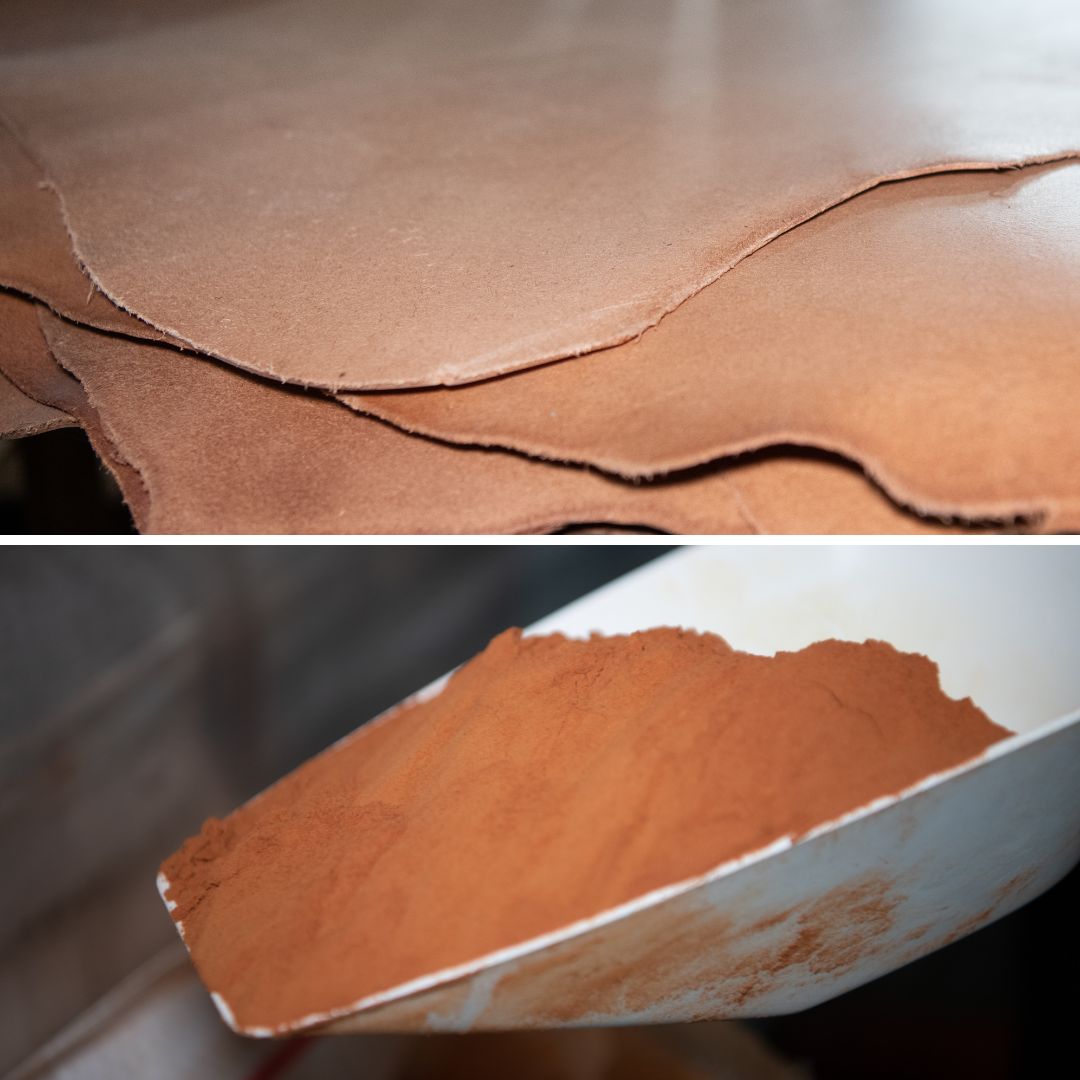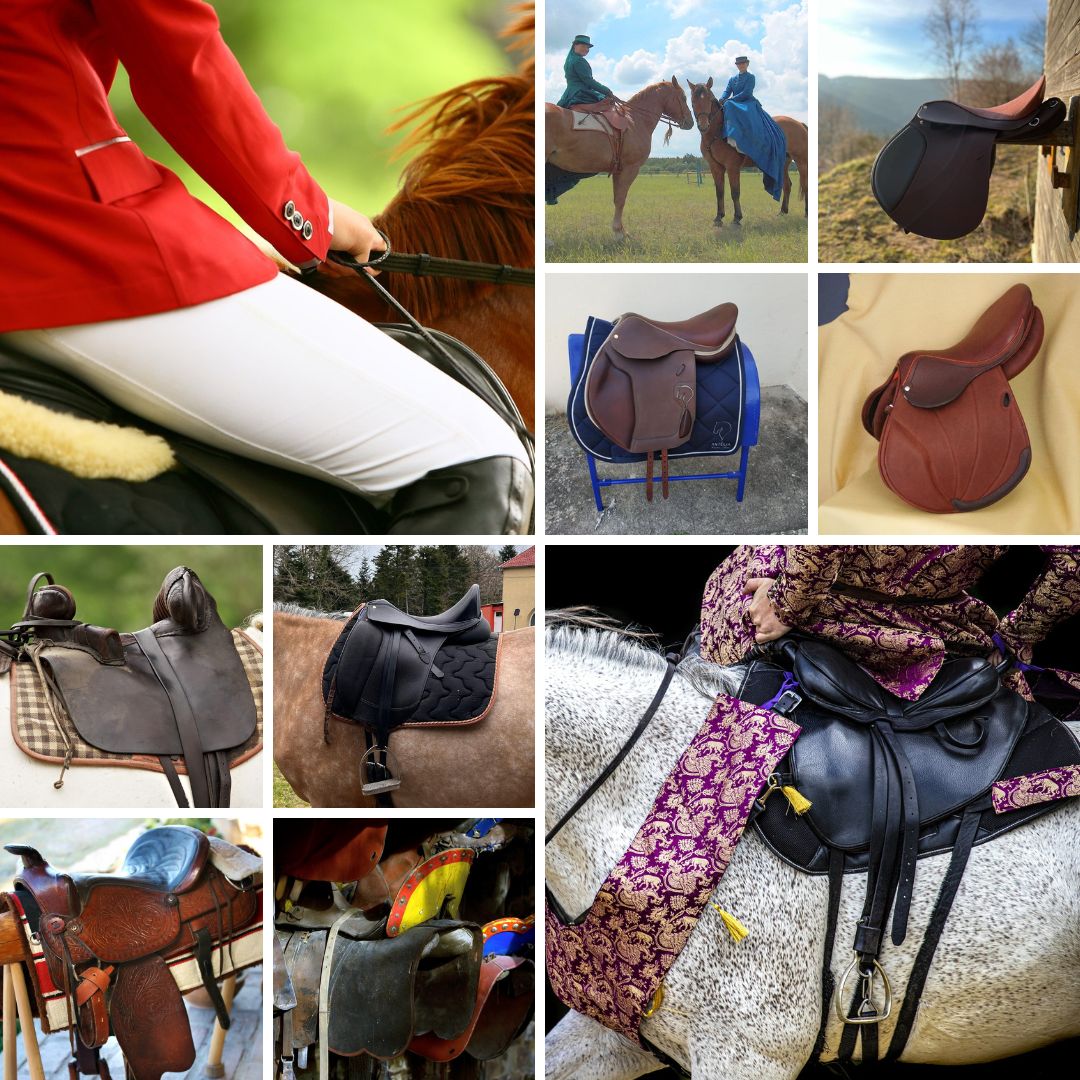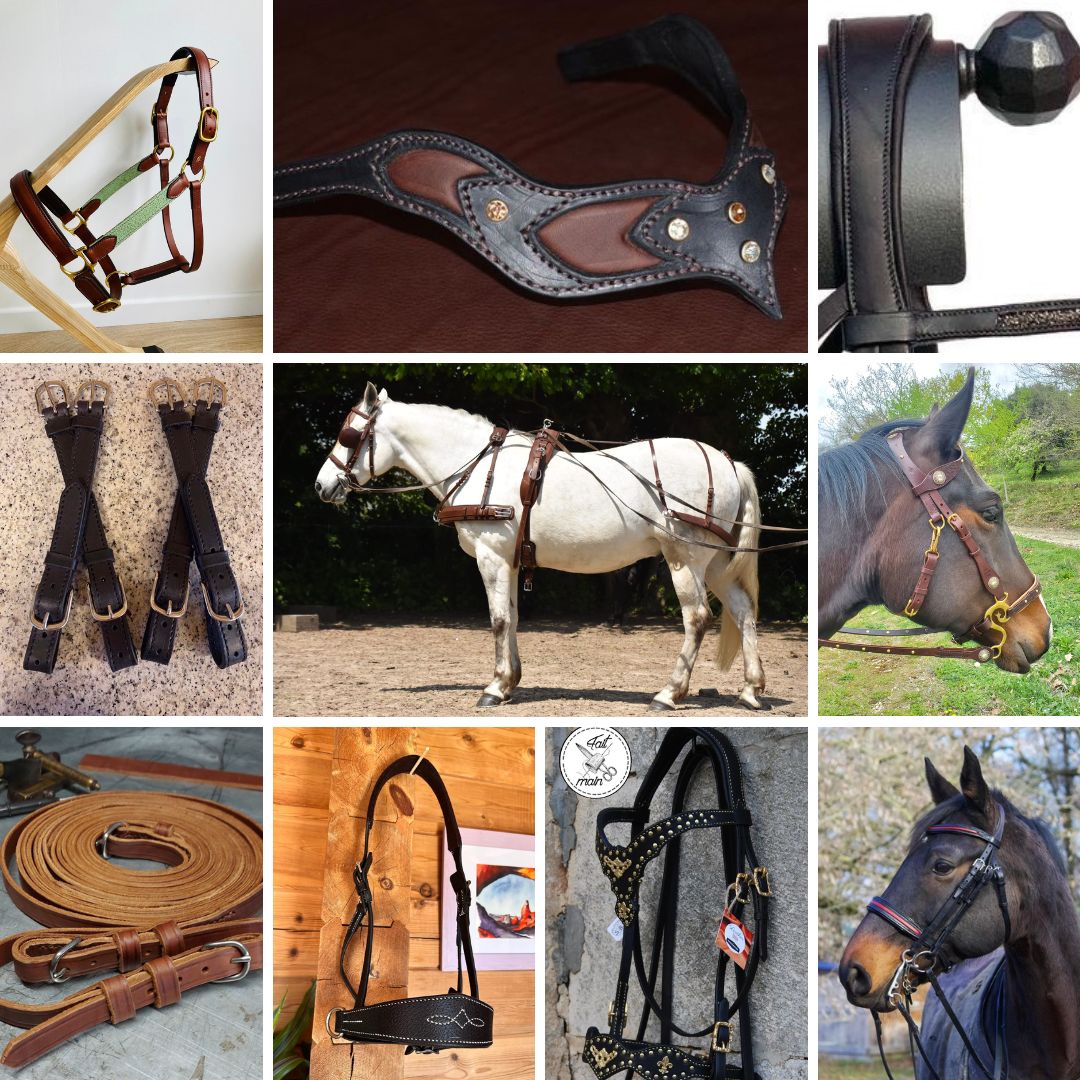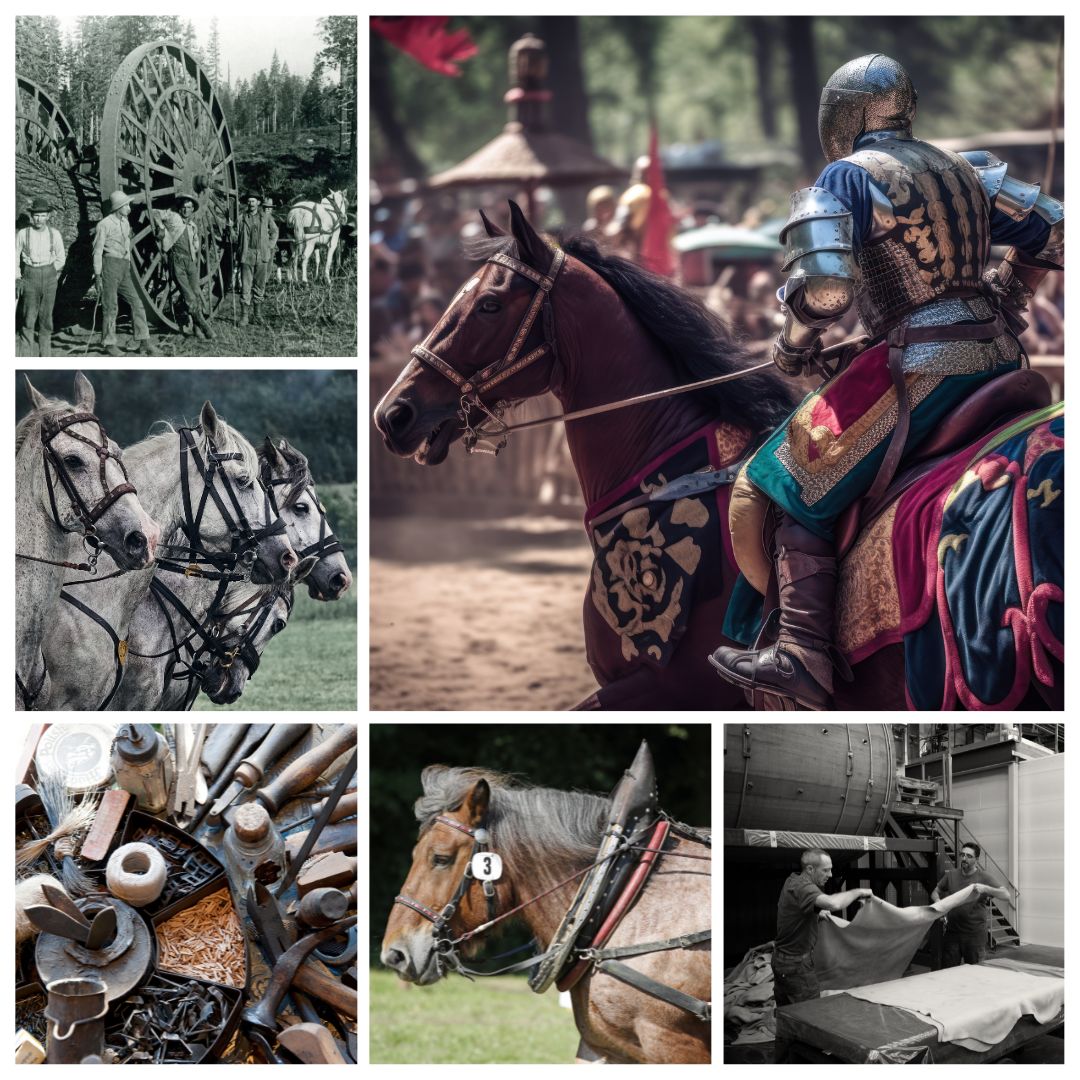
Leather care allows you to keep your leather goods for as long as possible, and perhaps even for a lifetime. As explained in our blog post"Tips and Guide", leather can have different finishes (aniline, semi-aniline, pigmented). In addition, the type of feed used in the production of the leather is an important element, such as wax bath food that we use for most of our saddle leathers.
Leather care, what are the elements to take into account?
Leather care according to the leather finish
The finish of the leather is essential. A leather with an aniline finish will easily absorb water or other liquid substances. A leather with a pigmented finish will be waterproof and this is due to the pigment layer applied to the grain.
This video shows you the difference in food absorption between leather with an aniline finish and leather with a pigmented finish.
Leather care according to its food
The majority of our leathers have a wax bath food, immersed in a fat bath. This unique process provides lifelong nourishment to the heart of the leather. The leather is so saturated with grease that it has an advanced resistance in outdoor use. Your bridle items made with our Niagara saddle leather, for example, will undoubtedly be able to withstand animal perspiration, contact with water, and even sea water.
For the care of your leather, we generally recommend
- Pay particular attention to light exposure, which can alter the shade of your leather
- Always dust your leather with a dry cloth before applying a specific treatment
- In case of contact with water, let your leathers dry naturally at room temperature, without any additional heat source
How to care for Radermecker saddle leather?
Care of saddle leather Angel Radermecker

Feeding on the grain will nourish the areas between the pores of the hide and the pores themselves. It is ultimately the same process as when you feed your hands when the skin on them is dry.
Our Angel saddle leather will resist humidity, just let it dry at room temperature to regain its appearance. Moistening the Angel leather allows it to have more elasticity and suppleness, Angel leather will shrink during the drying process without altering the hand and its suppleness.
Care for Niagara and Boyoma Radermecker saddle leathers

Thanks to tallow bath feeding, the fat is impregnated throughout the entire thickness of Niagara and Boyoma saddle leathers, so there's no need to feed over time. Food can be applied to the grain to ensure its greasy appearance or to accelerate the leather's patina. This care of the grain ensures a longer life.

Our Niagara and Boyoma saddle leathers are moisture-resistant. Just let them dry at room temperature to restore their appearance.
Care and maintenance of pigmented dyed Pykara saddle leather and Detian split leather - Radermecker

For our pigment-dyed Pykara saddle leather (black, chocolate, havana or cognac) and our Detian split leather, the food will remain on the surface of the leather without penetrating the grain side, as the pigments form an impermeable protective film. Food can be added to the flesh side of the leather to restore suppleness.
Care of Radermecker Pykara in natural saddle leather

For Pykara saddle leather in natural the food penetrates properly on both the grain and flesh sides. Once wet, you can dry the leather at room temperature. This will stiffen the leather and is the ideal process for moulding or embossing.
How to care for your leather equestrian equipment (saddles, bridle, etc.)?
Thanks to its many qualities, aesthetics, nobility,softness, resistance and durability, leather is the leading material for equestrian equipment.
Why maintain your leather equestrian equipment?

Firstly, for the comfort of the animal. Over time, the leather can become rougher and lose its softness, particularly due to the animal's perspiration or areas that are more exposed to friction. This can cause discomfort to your pet.
And finally, the last advantage of maintaining your equestrian equipment: Aesthetics. Maintenance keeps the leather beautiful and presentable.
For the care of your leather equestrian equipment, Radermecker Tannery advises you
- Dusting your equestrian equipment before feeding it
- Feed your leather once a week, and if necessary, grease it, giving the leather time to absorb the grease (no need for this frequency for our Niagara saddle leather and our Della saddle leather)
- Protect your equestrian equipment by storing it in a suitable place (not too humid, not too hot, not too light)
Maintenance of leather equestrian equipment, our expert customers advise you
Mrs Hélène Quairiatequine veterinarian & designer of equestrian leather goods
"I think it is necessary to talk about glycerine soap as a cleaner for leather equestrian equipment, especially if the animal has sweated. After each use, washing the browband, noseband and headpiece as well as the girth with glycerine soap will prevent the skin from heating up due to rubbing and sometimes even burns during the next use. Perspiration and dust can cause lesions on the animal and also attack the thread of the seams of the net and the girth, which leads to accelerated wear of the material.
Mrs Joanne Faniel - J&J Bourrellerie t Sellerie
"I advise my customers in this way: I direct them to a glycerine soap before feeding with grease or ox foot oil and take the opportunity to check the seams, if there are traces of wear or rubbing, torn leather, etc., especially on parts where there is a lot of effort, as well as the buckle, especially if they are hitch parts, it is a matter of their safety."

